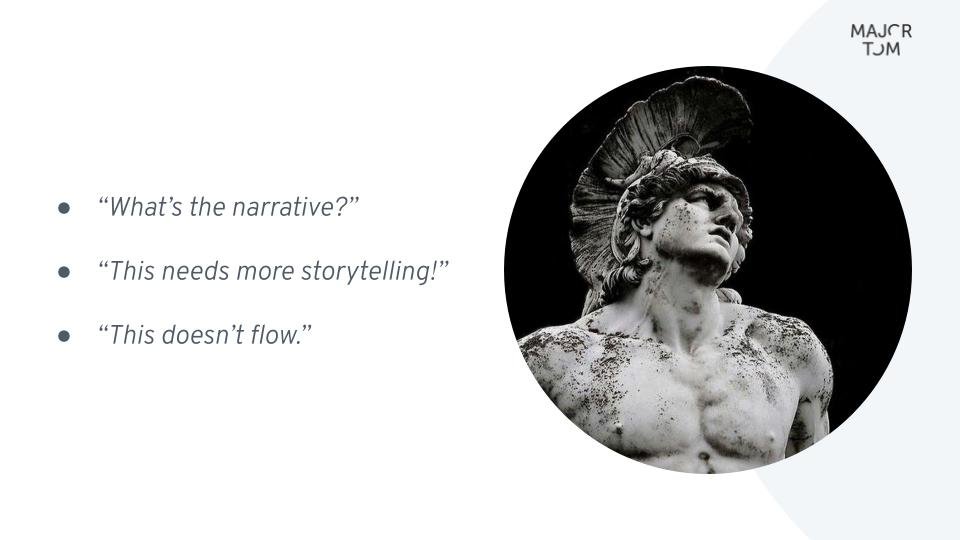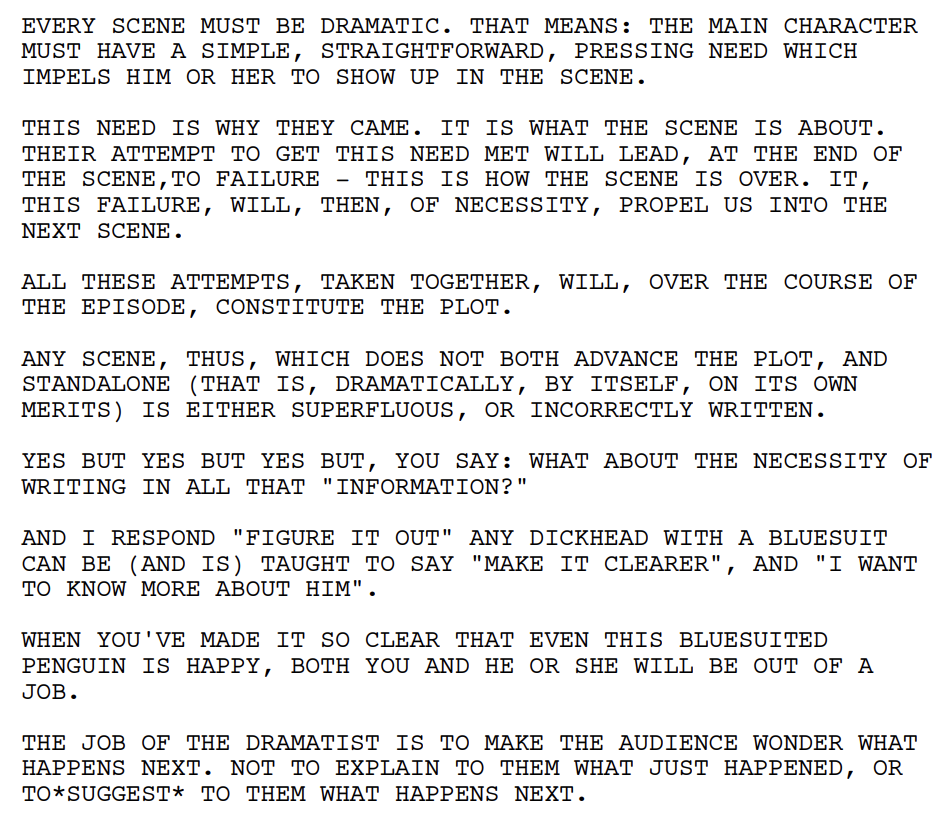Narrative & Pitch Decks
A few weeks ago my friends at Method & Metric (Vancouver’s best SEO agency) invited me to speak at one of their SEO Conversations evening events about “How To Create A More Effective Pitch Deck.”
I’ve spent a big part of the latter half of my career pitching new business, both for agencies and for myself as a consultant.
In that time, I’ve been part of a lot of losing pitches.
But I’ve also won a few along the way.
And I’ve learned a ton about what makes for a good pitch (hint: it’s not just how slick the presentation is), but also a bit more broadly about what makes for a good deck.
Below is a bit of a summary of what I took the group through:
Your Job Is To Sell - You might not be selling a new service or piece of business. But every presentation means you’re selling something: your way of thinking, your research, your point of view, your opinion, or you. You’re likely hoping that someone will say “Yes!” to what you’re sharing.
The Best Way To Sell Is With Stories - Telling stories helps us comprehend the information better so that we can deliver it more confidently. But it also provides a framework for laying out the information so that our audience can receive it and understand it more easily. Stories also help us connect emotionally with our audience.
Presentations Need A Narrative - And a narrative is not just “Once Upon A Time.” A narrative means a choice in taking a point of view and choosing what pieces of information to reveal (or not to reveal) based on that.
The best way to do this is to write out the “Logline” for your presentation before you start doing anything else: a brief synopsis of the story. There is more on loglines here.
Presentations - like stories - need drama. Drama is rising and falling action within a story. It’s what keeps us interested. It’s what drives the presentation forward, and makes us lean in to see what’s next (instead of leaning back to check our phones).
The example that I always like to use is a Detective Story: It might start with something exciting, like the discovery of a body or a clue. It slows down a bit as we are introduced:
We can take that same framework and apply it to what a strategy presentation might look like:
For more on this, I highly recommend reading David Mamet’s memo to the writers of The Unit:
Flow Is everything - How you transition between sections in a presentation matters, whether you’re presenting alone or with a group. Nothing kills a good presentation more than an awkward shift in topics or the dreaded “And now I’ll pass it over to…”.
Questions are a great way to handle flow AND continue to build in drama. End one section with a question to get your audience to try and answer it themselves. Then answer it in the next section.
Having an easy-to-follow structure can help with flow as well: Three acts, the Stephen King Planning Cycle, or a timeline can all help with flow and transition.
In the age of Google Slides and remote work, I feel like flow has become a bit of a lost art. In the olden days, we’d print the entire deck up and put it on the wall as we walked through it to understand the pacing and transitions.
Open With A Hook - The worst way to start a presentation is with a title slide. It puts people to sleep. It lets the presentation blend directly into the other presentations they’ve seen that day.
Movies are a great place to look for inspiration for what makes a great opening.
For my session, I had the group split into pairs and present their 2-minute pitch to each other, even before I introduced myself. it set the tone that this would be a collaborative event. Pushing people outside their comfort zone after a long day also helped bring the energy in the room up.
Dune is considered one of the best movies of the last several years, and it opens with a powerful sound and subtitles before even the Warner Brothers logo. It instantly sets the tone and brings you to a different world.
Finish Strong - One of the best pieces of advice I’ve had for a presentation is to bookend it with whatever your opening was. Even if the rest of the presentation was scattered, it makes it feel like you tied everything together.
For this presentation, one of my opening pieces was to tell the group that their job was to sell and had them present to each other. I finished this presentation by reminding them of this and having them re-present their updated slides to see how improved they were.
I often start presentations with a question, and resolve the question (using the same language) on the last slide).
I absolutely love presentations. I love planning them, I love writing them, I love making them (and I feel that the planning, writing and making are all truly distinct activities) and I love giving presentations. But I also don’t think they’re always the best way to communicate information or to win a pitch.
Some notes:
I treated my presentation as a bit of a workshop, and had the participants present 2 minute pitches to each other, then re-write those, then re-plan them, then re-write them, and finally re-present them, as we went through different ways of looking at decks. It was a bit of a test of a new way of running a session like this and I’ve got few things to iron out. Thanks to the everyone who joined!
As I write out this blog post and re-look at my deck I realized that I didn’t even heed my own advice: except for a strong start and some minimal structure, there was no rising or falling drama. No tension to resolve. Time to re-draft this deck for the next time!






